'Killers Of The Flower Moon' True Story: The Real Osage Nation Murders
- Oops!Something went wrong.Please try again later.
- Oops!Something went wrong.Please try again later.
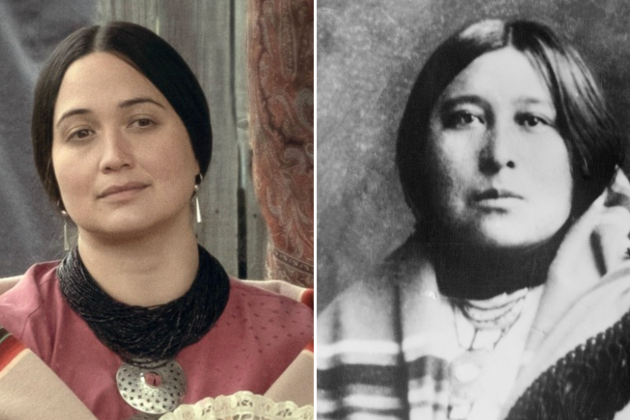

Martin Scorsese’s $200 million epic “Killers of the Flower Moon,” based on David Grann’s 2017 non-fiction book, centers on the Reign of Terror, a term the Osage Nation used to define the murders of at least 60 community members in the late 1920s. The film tells this true crime tale through the lens of a marriage between Ernest Burkhart (Leonardo DiCaprio), a World War I veteran who relocates to Oklahoma to work with his rancher uncle, and Mollie Burkhart (Lily Gladstone), a local Osage woman whose family was one of the community’s wealthiest. Robert De Niro stars as Ernest’s uncle, William Hale.
More from Variety
As both Grann’s book and Scorsese’s film lay out, the cause for the murders trace back to the early 1870s when the U.S. government forced the Osage people to leave their Kansas lands and move to northeastern Oklahoma. The Osage bought their Oklahoma reservation, a game-changing decision that gave them the rights over their new land. The U.S. government thought the Oklahoma area owned by the Osage was worthless, but everyone soon discovered the land was rich in oil.
As The New York Times reports: “After large [oil] deposits were discovered in 1894, the Osage, who retained communal mineral rights, came into enormous wealth: Prospectors had to pay the tribe for leases to extract the oil, as well as royalties on the profits. In 1923 alone, the Osage earned $30 million in royalties, the equivalent of roughly $540 million today.”

This is where Hale (De Niro) enters the story. He was a white cattle rancher who proclaimed himself the “King of the Osage Hills” (see the real Hale on the right in the photo above). He befriended many members of the Osage nation so he could lease and/or buy acres from them for his business. But he secretly conspired against the Osage in order to rob them of their wealth. Hale figured out that if his white allies were to marry Osage members, they would be legally entitled to their Osage spouses’ oil royalties since they passed through an inheritance. As long as there was a legal marriage in place, Hale could orchestrate the murder of an Osage so that the money passed to their white spouse.
These oil royalties were known as “headrights.” Per The Times: “Every one of the 2,229 members on the Osage tribal rolls in 1907 was entitled to an equal share of the oil royalties. These payments could amount to as much as $13,000 per year per person, or the equivalent of $232,000 today. A family of four would have received the equivalent of about $928,000 a year.”
Grann explains in his book that “headrights” were not allowed to be bought or sold, so it’s not like Hale could simply use blackmail or extortion to steal money from the Osage. The “headrights” could only be inherited, which is why Hale used marriage for non-Osage men to gain access to Osage money.

Hale convinced his nephew, Ernest (DiCaprio), to marry the wealthy Osage woman Mollie (Gladstone) in order steal her family’s wealth. Ernest and Mollie (photographed above) married in 1917. Mollie was a diabetic, so Hale reasoned that her death at a young age would not be too far-fetched or looked into by law enforcement. But Hale was greedy and wanted even more money. He planned the killings of Mollie’s sister, Minnie, and mother, Lizzie Q, through poisonings. Mollie’s other sister, Rita, died in a house explosion. Their finances all reverted back to Mollie and Ernest. All the while, Hale was having Ernest slowly poison Mollie so that all of these finances would be inherited by Ernest once Mollie died.
Mollie had another sister, Anna Brown, but Hale orchestrated her murder by having her shot in the back of the head. The other killings, be it poisonings or a house explosion, were much harder to prove as murder, which is why the shooting finally caught the attention of the newly-formed FBI, who sent detective Tom White (played by Jesse Plemons) and other agents down to Oklahoma to investigate the killing. White and other FBI agents spent several years embedded in the Osage Nation and gained the trust of enough members that they started speaking out against Hale, whose scheme had turned him into a millionaire.
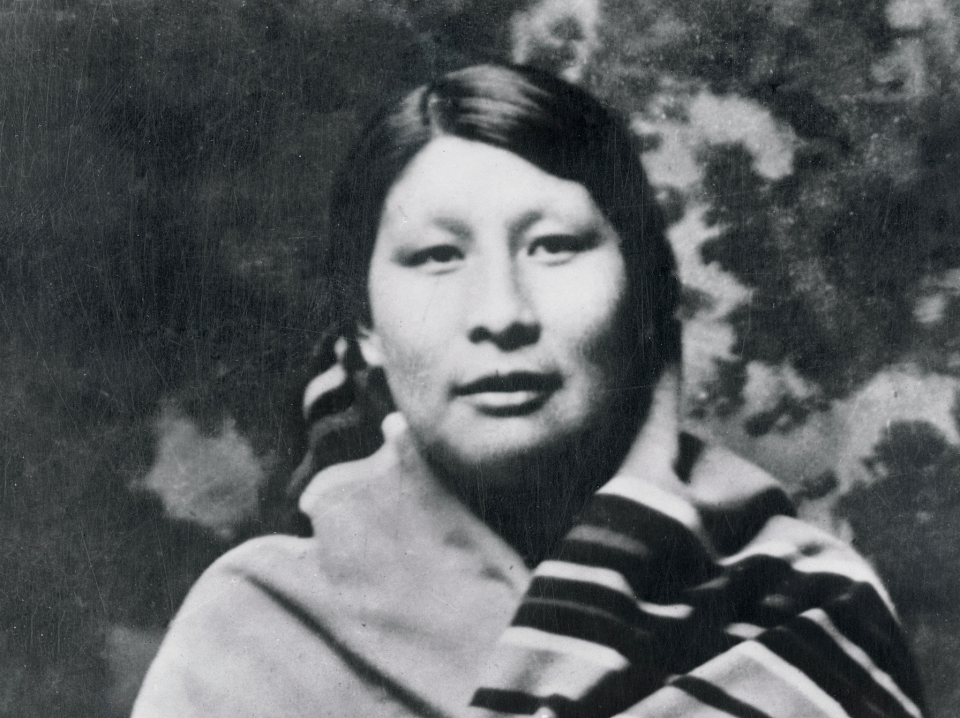
Hale and Ernest were arrested in 1926 for the murder of Rita (photographed above) and her husband, Bill. During the trial, Ernest confessed to his role in the scheme and ratted out Hale as the head of the murder operation. Hale was sentenced to life in prison, but he was released on parole in 1947 after 18 years. Ernest was also sentenced to life in prison but got paroled in 1937. Mollie ultimately recovered from the poison she had consumed and divorced Ernest. She died of unrelated causes on June 16, 1937. The three children she had with Ernest inherited her estate.
Grann told The Independent that he interviewed Mollie’s granddaughter, Margie, when he was researching the “Flower Moon” book, and it was clear the family still resents Ernest for his betrayal.
“[Margie] showed me a photo of her dad and her aunt, standing next to a man,” Grann said. “You can’t see the man’s head and I had to ask, ‘Was this Ernest?’ And Margie said, ‘Yeah, my father ripped off his head.’ That photo told me everything. Here was a boy with an innocent photo of himself with his dad. At a certain point, he realized who his dad was and had to remove that face, so he wouldn’t have to look at his father… Another time, Margie took me to the graveyard and showed me all her relatives who’d been murdered and said, ‘I had to grow up without cousins.’”
Scorsese’s “Killers of the Flower Moon” is now playing in theaters nationwide from Paramount and Apple. Grann’s book is available for purchase. Check out more photos related to the true story of “Flower Moon” below.
Anna Kyle Brown (1886 – 1921)
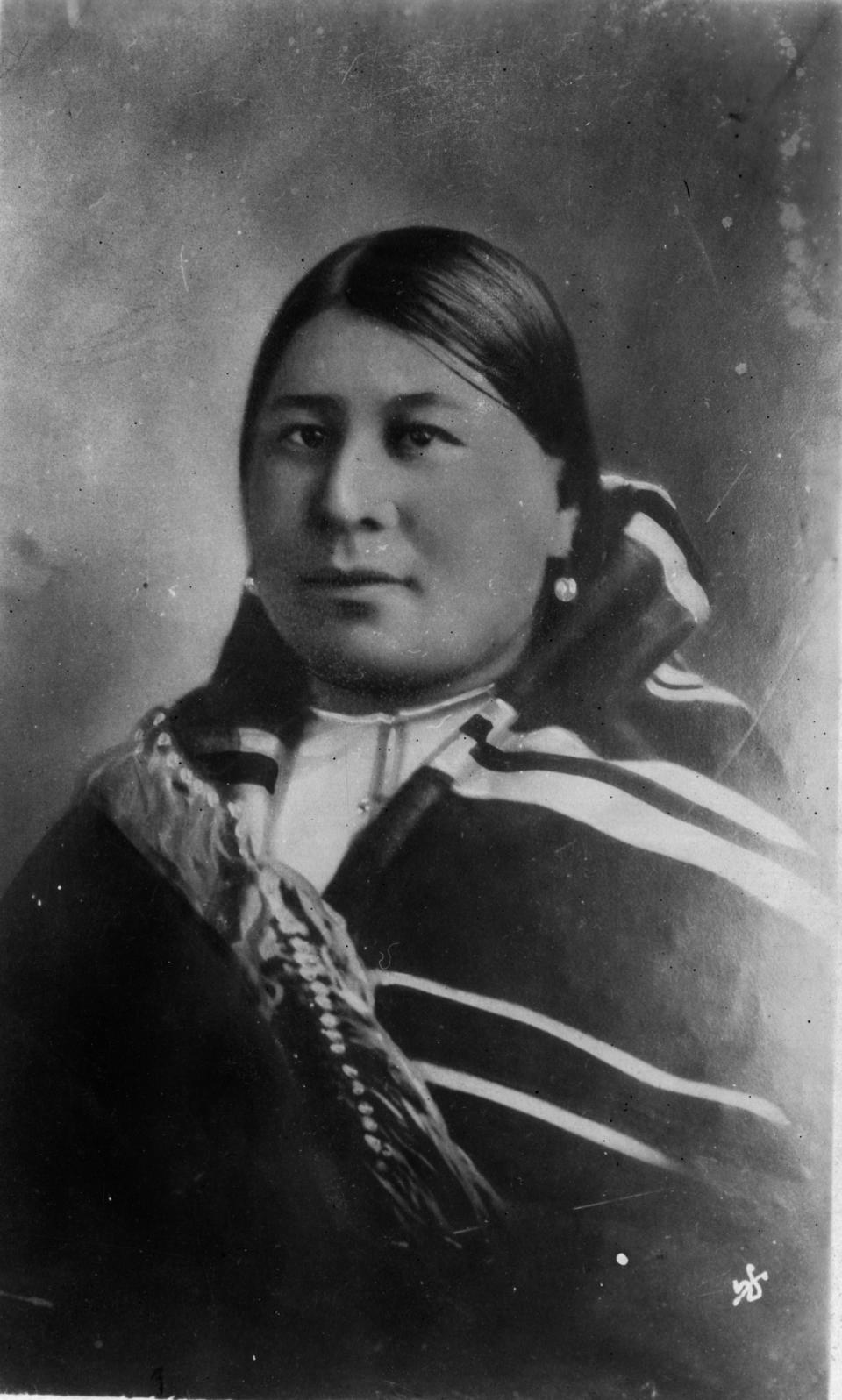
Portrait of Osage Native American woman Anna Kyle Brown. She was one the first recorded victims in a series of more than 60 killings, between 1918 and 1931, which came to be referred to as the ‘Osage Indian murders.’ Anna was one of Mollie Burkhart’s sisters. She was shot to death, and her murder was orchestrated by William Hale. Her killing was the first Osage death that got the FBI involved in the murder spree.
Lizzie Q. (1858-1921)
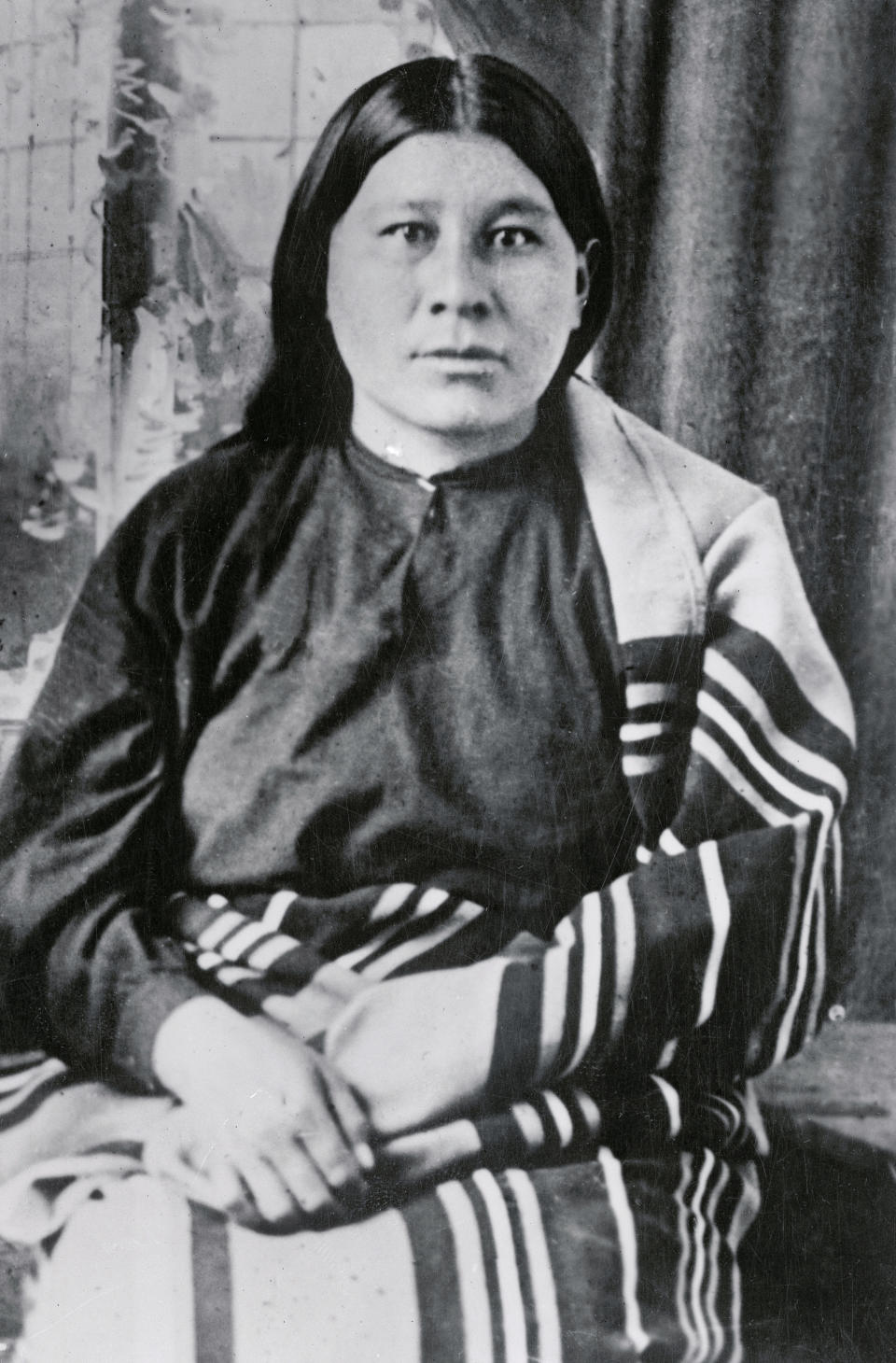
Lizzie Q. was the mother of Mollie Burkhart. She was poisoned to death.
William Hale, the Self-Proclaimed “King of the Osage Hills”
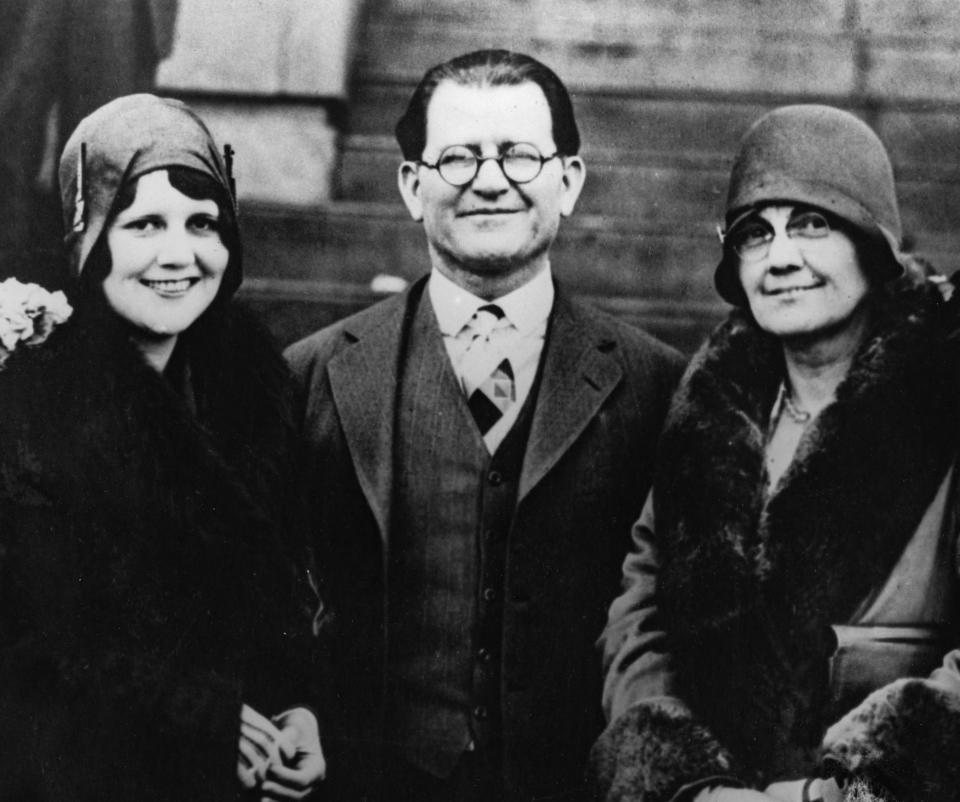
From the Bettman Archive: “William K. Hale, the mystery man of Oklahoma, who is on trial here for the third time in connection with the death of Dewey Roan, Osage Indian and Ward of the government. Hale is one of the most colorful characters in Oklahoma history and now is waging a battle to free himself of charges that he participated in an alleged plot that brought death to several Osages who were rich in oil land rights.”
The Osage in Washington
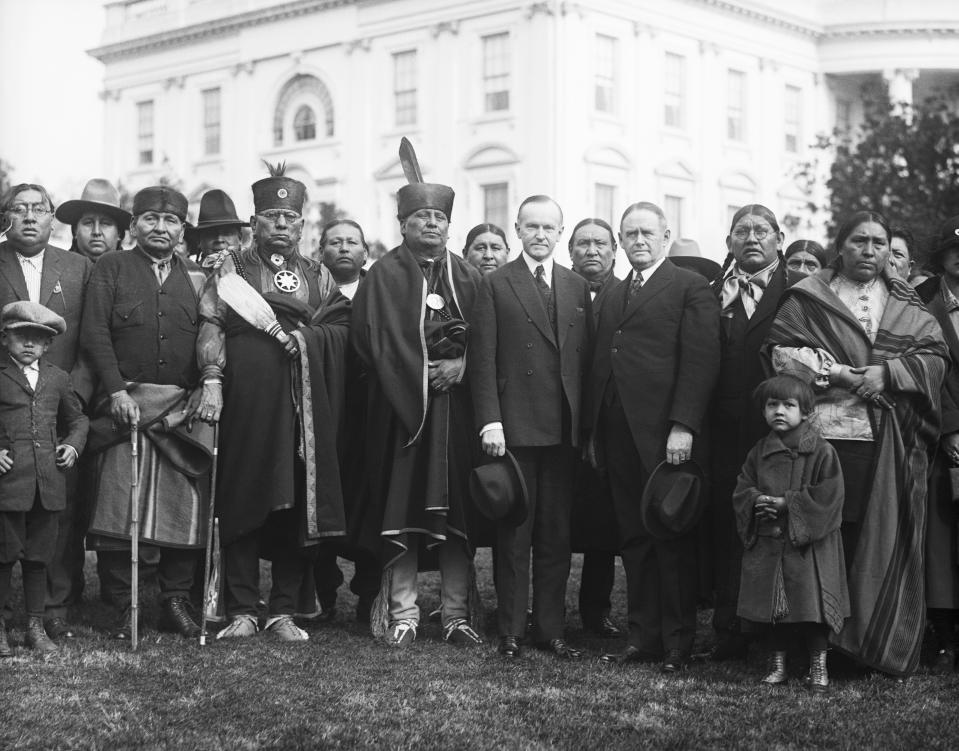
From the Bettmann Archives: “Osage meet in Washington regarding their oil lands in Oklahoma. The Osage are the wealthiest tribe in the United States. Photo shows the Osage posed with President Coolidge.
Osage Women

From the Bettmann Archive: “Two Indian flappers accompanied the group. Left to right in the group are Mrs. Red Eagle, Miss Rose Wagoshe, and Miss Mary Red Eagle. The child is little Miss Julia Red Eagle. The two young Indian girls, in their modern dress, present a striking comparison with the older Indian woman.”
Osage Oil Fields
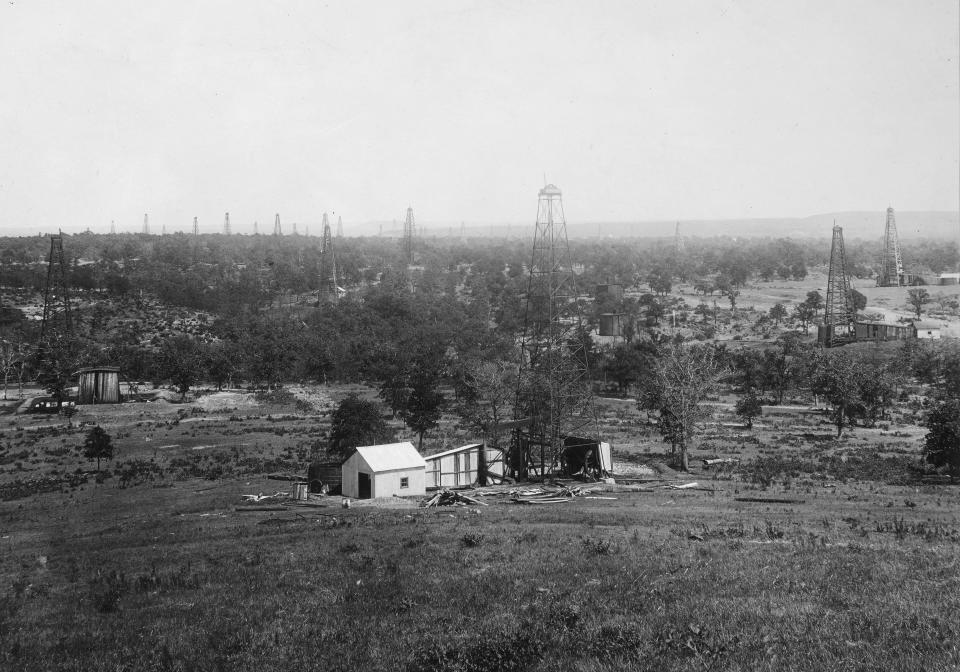
A photograph showing the oil fields owned by the Osage community of Hominy.
Osage Family
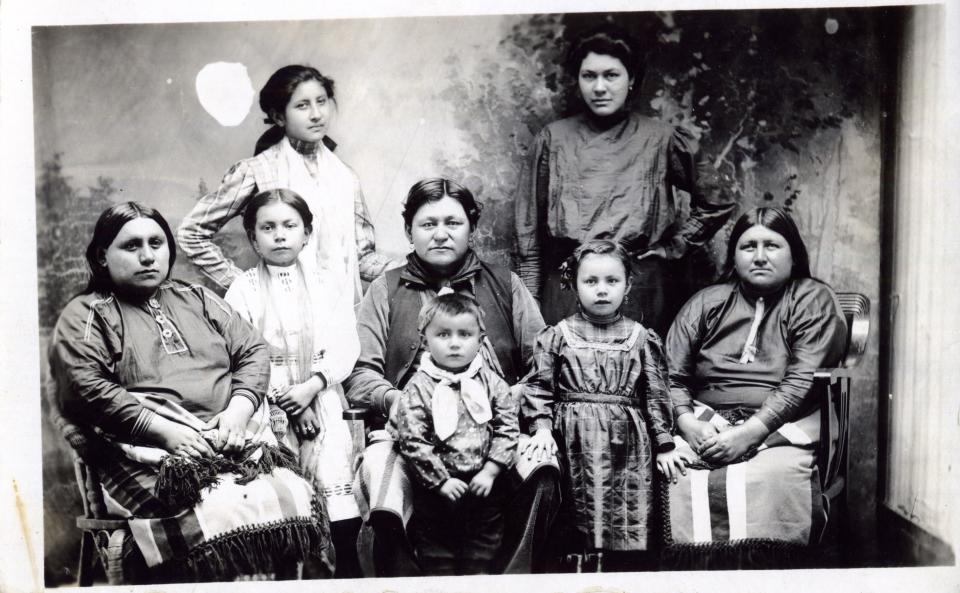
Postcard features a photograph of a group of unidentified women and children of the Osage Nation, Pawhuska, Oklahoma Territory, circa 1918 – 1922.
Best of Variety

